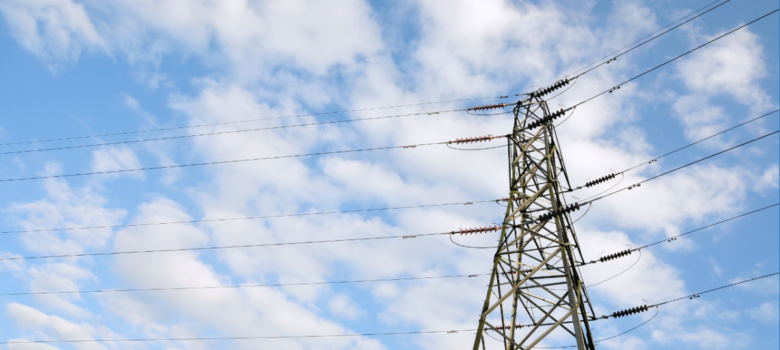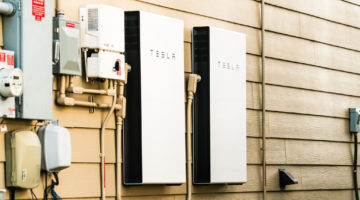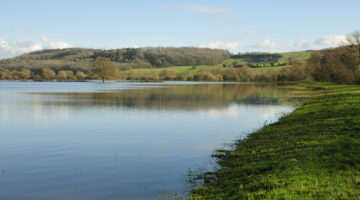
History of the Grid
Britain had the beginnings of its national grid system in 1937, when a group of engineers connected a series of smaller electrical regional grids, in an effort to increase supply security and reduce overall electrical cost. This was to form the basis of the national grid, which we have relied on ever since to provide us with electricity as and when we need it.
However this National Grid was created when energy was relatively inexpensive to generate. This meant that reliability was ensured through the production of excess capacity.
The limitations of the current national grid
As we have mentioned previously, the current grid has its limitations. First of all, it is an ageing infrastructure that is creaking and straining under the weight of the current electrical needs of the country. In the sections below we are going to examine some of the issues that the national grid currently faces:
Electricity supply and demand
Previously, as demand increased, so did capacity – simply, a new power plant was installed. Over time though, the cost of installing new capacity has risen dramatically, as has the cost of the fuel used to power it. Nowadays, more and more of our daily activities rely on electricity. This has led, in spite of improved energy efficiency in many appliances, to a sharp rise in the amount of electricity we consume, pushing up our peak demand to unprecedented levels.
This has put the current electrical grid in an interesting position. Energy demand has increased over time; however new capacity has not been installed at the same rate, so the amount of headroom (the difference between peak supply and peak demand) has been dramatically reduced. This has resulted in the need to fire up older, highly inefficient power stations just to meet current demand. Unless new plans are put into place, things will only get even stickier in the years to come.
Electricity transmission
The active process of getting electricity from where it is generated to where it is needed is actually a fairly simple process. However, as the demand for electricity has increased, the Grid has been forced to handle huge amounts of electricity that has to be transmitted great distances from its source to where it is required. This is a highly inefficient process, with large amounts of electricity being lost due to lengthy supply lines and basic transmission intelligence.
Increase in renewables
The UK used to rely on a centralised core of fossil fuel and nuclear power plants running up and down the spine of the country to provide itself with power. However, as these power plants have aged, many have closed down, and a new EU carbon reduction directive has meant that many more are due to close in the near future.
The Grid has had to replace this lost capacity by installing new power plants. Since the turn of the century, this new capacity has largely been in the form of combined-cycle gas turbines and renewables.
The major issues with gas is that we need to import it and although it is cleaner than coal, it still produces harmful emissions when burnt. The major issue with renewable energy is that it is intermittent; if the wind isn’t blowing, no power is produced from wind turbines. This makes integrating renewables into an ageing and inflexible grid much more difficult, since energy storage will have to be bought into play. This further complicates the energy picture in the UK.
Reliance on imported fuels
As previously mentioned, many of the UK’s ageing fossil-fuelled power plants are shutting down, however new combined cycle gas turbine plants are still popping up. One of the fundamental issues that we face is energy security. As things stand, the UK is incredibly reliant on gas, especially when it comes to heating homes. This was partly the result of North Sea gas, which we assumed would never run out! The problem is that unfortunately it has; so we import the majority of our gas from Qatar and Norway.
So ultimately, the ability to heat our homes does not sit with the UK energy companies; instead we rely on the Middle East where much of our gas is sourced from – one of the most politically volatile places on earth. We have already seen massive price fluctuations, and it’s pretty worrying to be absolutely at the mercy of these countries.
Centralised energy production
The centralised method with which Britain powered the National Grid is fast becoming outdated. Previously, hundreds of fossil fuel power plants would stretch up and down the centre of the country, supplying the nation with electricity. However, with the increase in solar panels and wind turbines comes the massive increase in micro generation. This is decentralising a grid designed to run via centralised means.
Increased cost of production
Not only is demand increasing, but also generation is becoming progressively expensive to expand. You may have read the recent nuclear power plant go-ahead and wondered why energy production has become quite such an expensive business. The simple fact of the matter is, that while the current grid system remains, prices of generation will continue to rise and these increases will be passed onto the consumers. Nuclear power is pricey, importing fossil fuels is expensive and renewable energy can not yet be relied upon.
So what can we do?
Obviously, peak supply falling below peak demand would cause serious issues, the concept of rolling blackouts has fortunately not been something most of us have come across in our lifetime. However these are a real possibility in the years to come unless we act now – so what exactly can we do?
- We could use less electricity – energy conservation
- We could install more electricity generating capacity – energy generation
- We could be wiser in our electricity usage, try to dampen peak demand and produce electricity closer to where it is needed – Smart Grid
Obviously the best thing to do here is to use less electricity and energy, by generally being more energy efficient. This means that, without placing constraints on what you can do, you use less energy in everyday tasks.
Increasing the electricity generating capacity is probably the most expensive of the options. This is highlighted by the US Government having calculated that it costs about 3x as much to roll out new capacity, compared to reducing demand through energy efficiency.
The final option available is to be wiser when using energy– now this doesn’t necessarily mean energy efficiency. Instead it is looking at ways to remove the peaks in our energy demand to allow a lower installed electricity generating capacity to meet our energy requirements.












“This is highlighted by the US Government having calculated that it costs about 3x as much to roll out new capacity, compared to reducing demand through energy efficiency”- May I inquire about the source of the claim made by the US government? A link to a study from the US Department of Energy, perhaps? Thanks!
Please can you explain how the grid is controlled to accommodate non base variable availability wind/solar etc. renewable generation with base governor controlled generation of coal/oil/gas/ nuclear to maintain system stability./ load sharing. Is the grid now potentially more unstable with increasing generation from renewables.
It is clear there is a decreasing safety margin between generation capacity and peak demand. There appears to be no clear solution to operating smarter to reduce periods of peak demand and extra capacity seems to be a must for the country to improve electrical security. Also to further increase system security we need to reduce reliance on foreign fuel suppliers and their potential for holding the uk to ransom – perhaps this is an argument for increase base nuclear power generation in the medium term even though this is a relatively expensive option.
There seems to be a government led political and motor manufacturers drive for electric cars. This has potential to hugely increase load on the grid and there seems to be no tie up between government strategies for electric cars and electricity generation. Comment on this?
I have huge concerns for the capacity and operating stability of the grid into the future and the seeming lack of any clear generation vs load strategy into the future. A clear long term political/operating strategy should drive investment in the infrastructure? – any comments on this?
Long term – Is there any potential to use modern technology such as lasers /semiconductors to release hydrogen in bulk from seawater and generate electricity using hydrogen generators? – (similarly hydrogen for powering individual cars)?.
Actually, the answer is potentially pretty simple and it is already being experimented with. Essentially this would be a very large number (in the tens of millions) of relatively small domestic and industrial batteries of around 20 and 300 kWh respectively, 2-way-connected to the grid and controlled by the internet. Potentially this would also include millions of electric vehicles connected using a ‘V2G’ system. Thus, on a regional basis, collectively large amounts of energy could be dumped to or absorbed from the grid to account for local weather affecting renewable generation, all without the drawback of the significant issue of long distance transmission and conversion losses attributable to the existing system (56% of all electrical energy imported or generated in the UK in 2018).
Hi, Do you not think the use of Hydrogen cells within EV’s is a reckless solution. The volatility of Hydrogen fuel could have disastrous implications . Albeit Lithium Cells are Thirsty and demand 1000’s of Mw in the future, do you not think the safety aspect outweighs the demand problem? After all, imagine if you have a accident within a Hydrogen cell vehicle, I doubt you or even the recipient are surviving
Also, I think you have some great points regarding the National Grid and it’s future. Do you have a email/any social media account where we could discuss anything further? Cheers mate
Apparently, the spread of fire in a vehicle lithium battery is so rapid that the occupants would be lucky to exit the vehicle unscathed.
You say “So ultimately, the ability to heat our homes does not sit with the UK energy companies; instead we rely on the Middle East where much of our gas is sourced from” . How “much”? What proportion of our gas used comes from “the Middle East”. Your article uses sloppy phraseology and is sloppy journalism. And more importantly it misleads the reader.